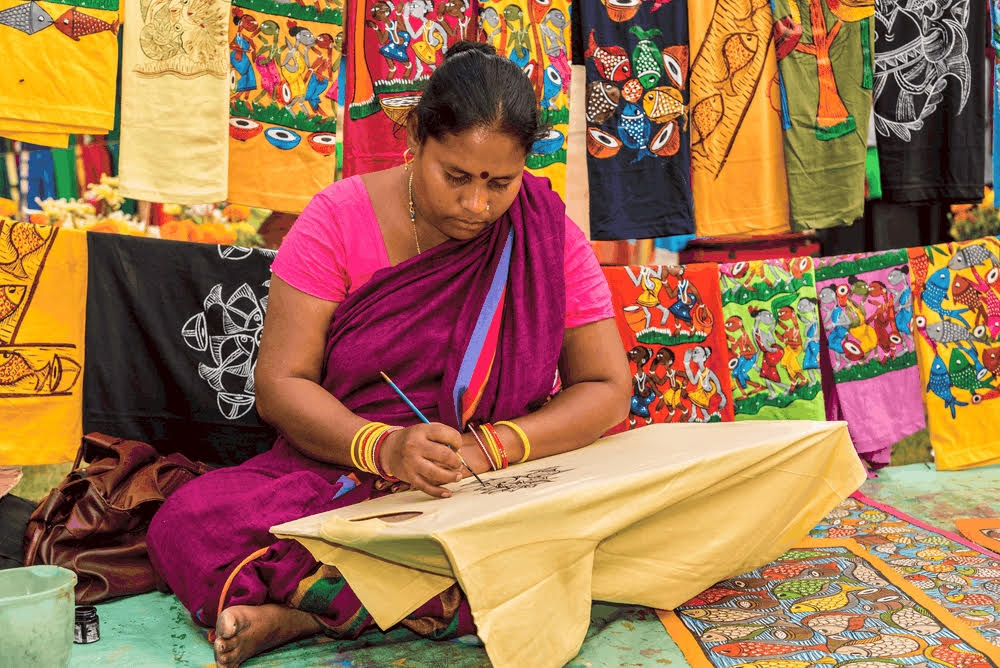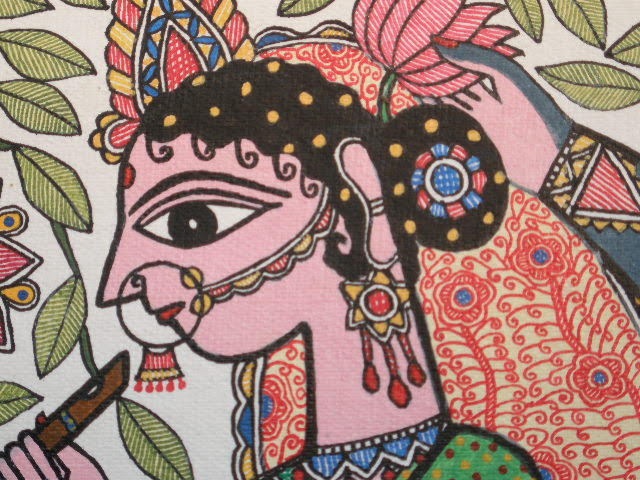
In the late 1960s during a two-year drought, a group of female painters in the north Indian region of Mithila (near Nepal) were asked to reproduce on handmade paper the artwork that they and their female ancestors had been traditionally creating on the interior walls of their homes for wedding rituals. A small group of talented women agreed to do so, and their paintings were brought to a newly opened handicraft emporium in Delhi where they quickly sold out. The enthusiastic reception of the artwork led more women from Mithila to join the ranks of the artists and demand for their paintings increased. The income the women earned allowed their families to avoid extreme poverty and possible starvation. We’ll look at how these painters transformed their lives and those of their offspring and we’ll examine their paintings and the branches of artwork that grew out of the move from walls inside the house to works on paper and canvas. Today more than 30 major art museums across the globe own paintings made by Mithila women.
